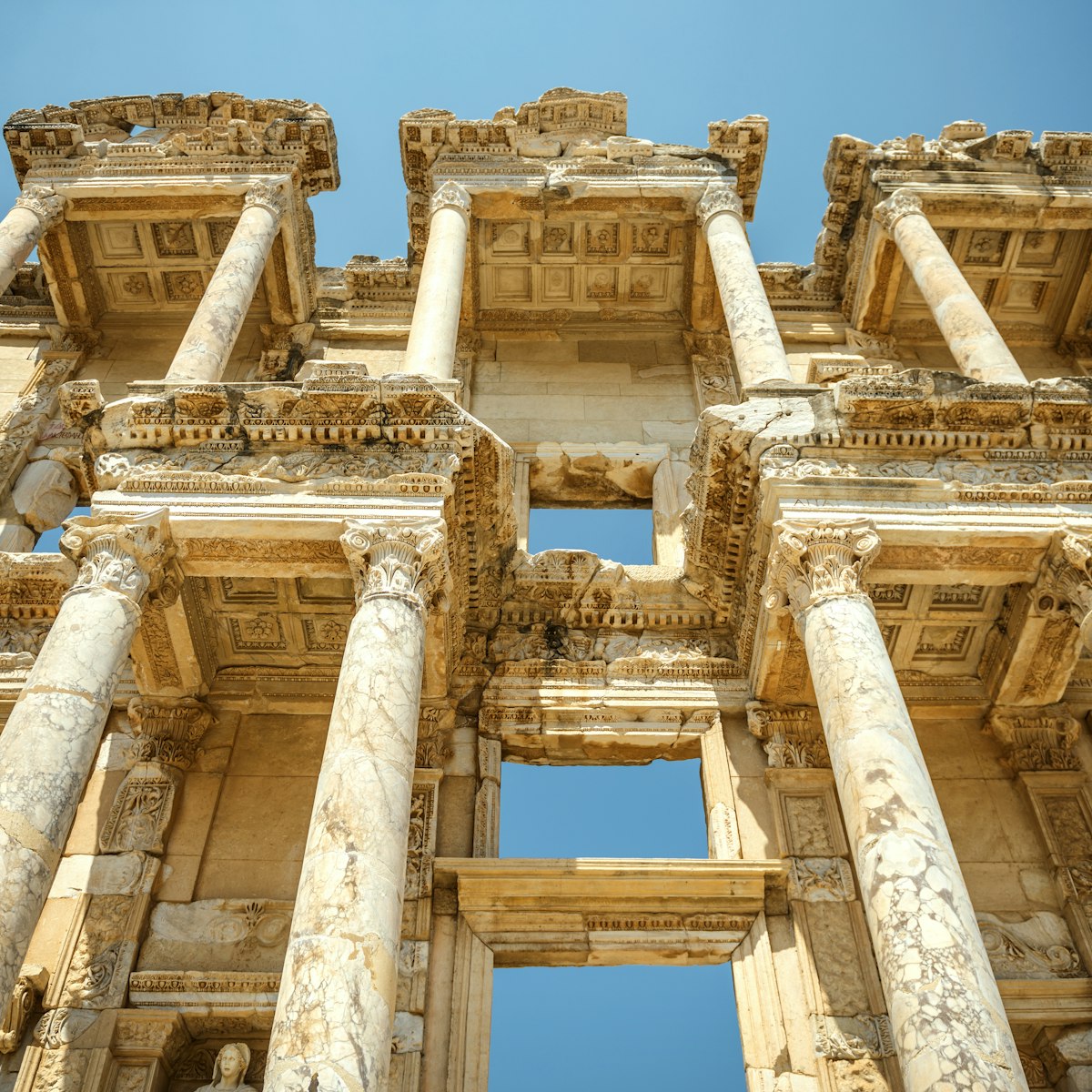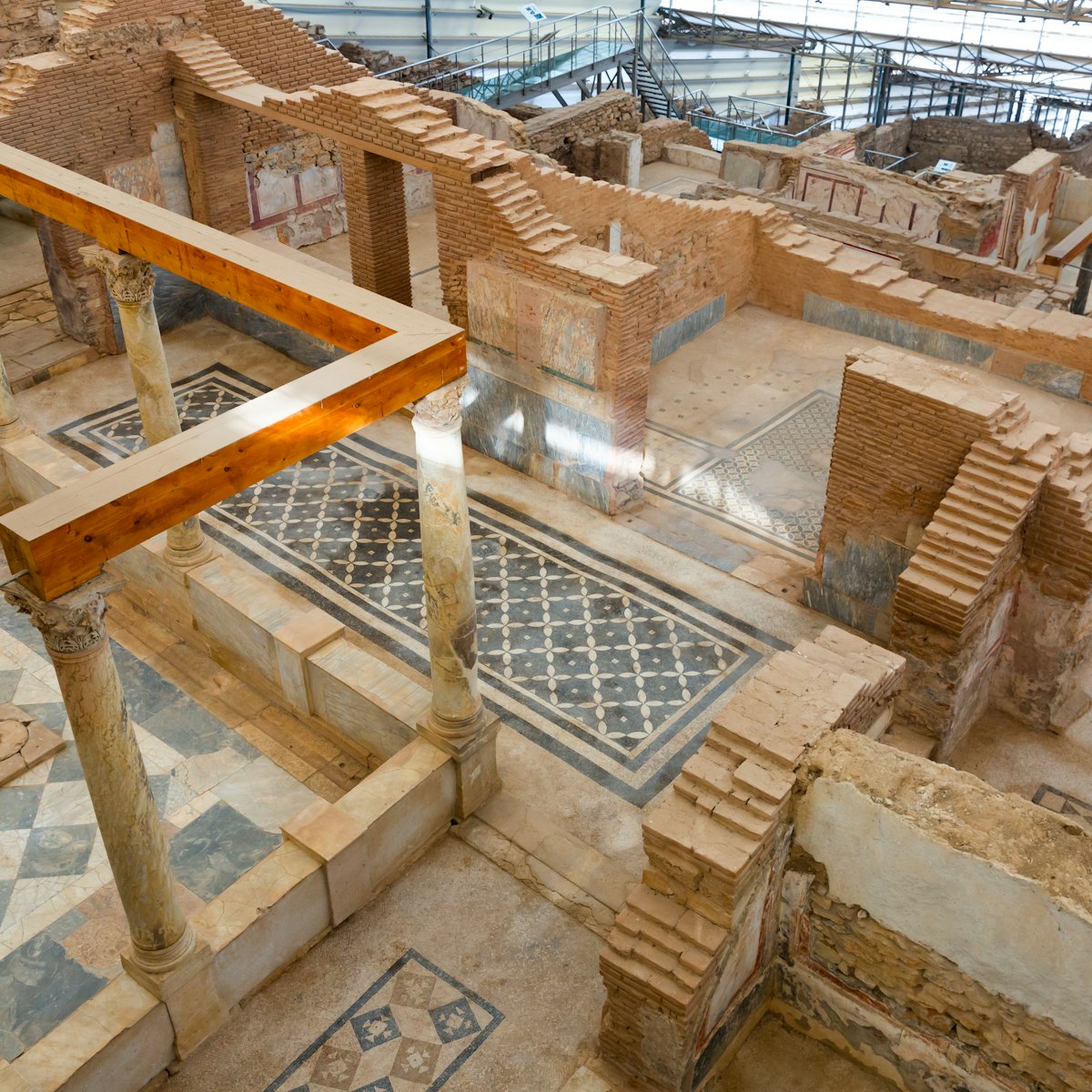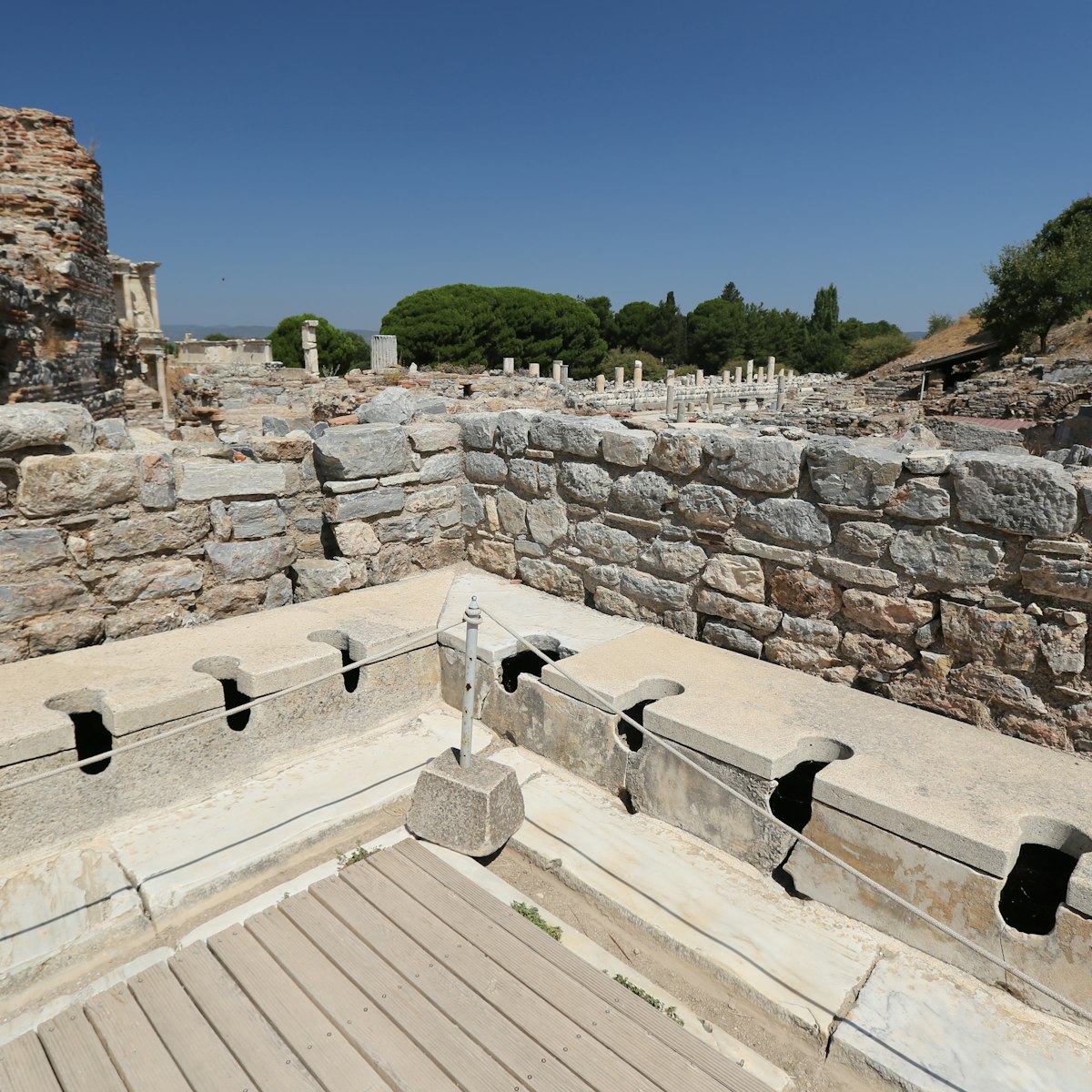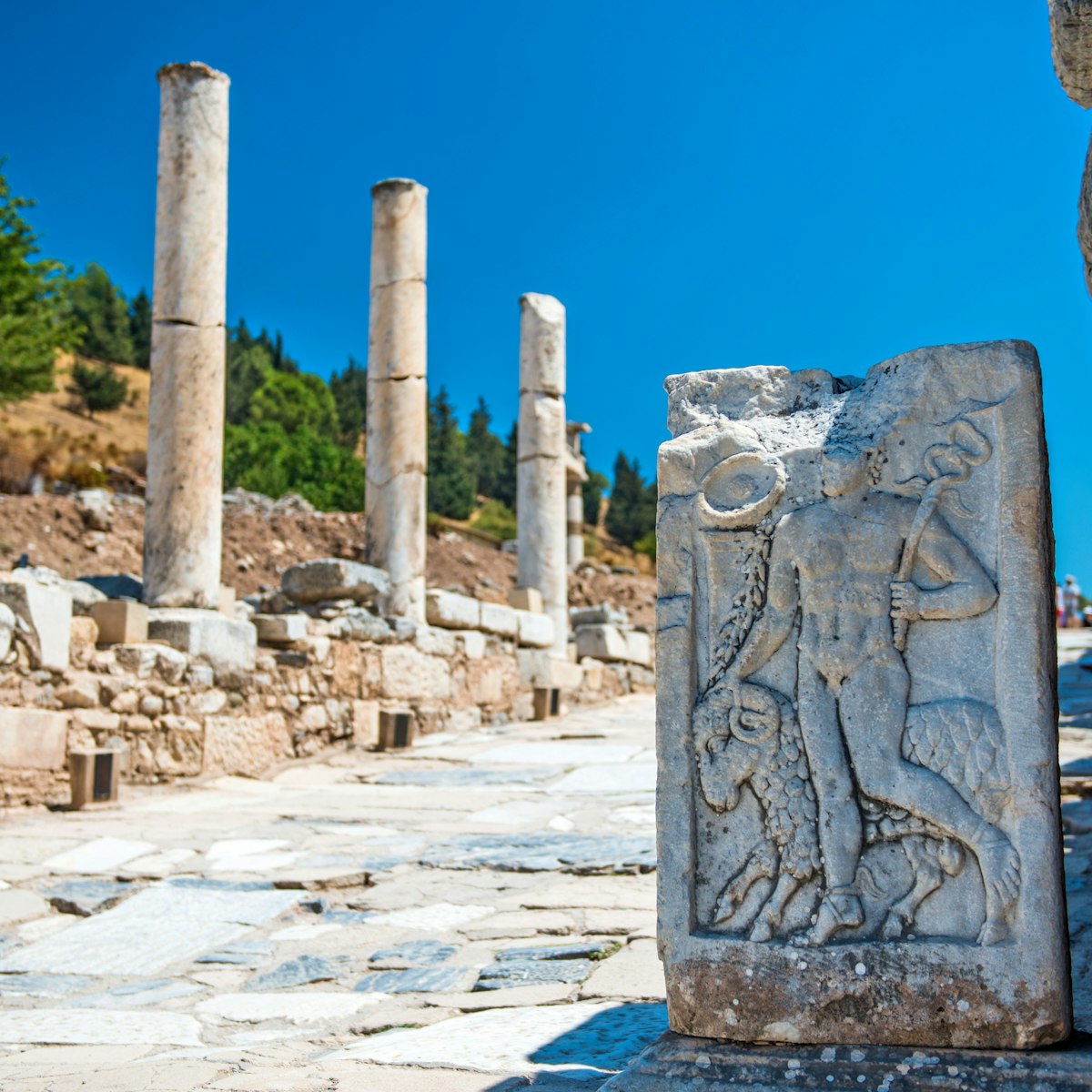
Ephesus
Of Turkey's hundreds of ancient cities and classical ruins, Ephesus is the grandest and best preserved. A Unesco-listed World Heritage Site, it's the best…

Ephesus
Of Turkey's hundreds of ancient cities and classical ruins, Ephesus is the grandest and best preserved. A Unesco-listed World Heritage Site, it's the best…

Ephesus
This magnificent library dating from the early 2nd century AD, the best-known monument in Ephesus, has been extensively restored. Originally built as part…

Ephesus
The roofed complex here contains seven well-preserved Roman homes built on three terraces, which are well worth the extra visiting fee. As you ascend the…

Ephesus
Originally built under Hellenistic King Lysimachus, the Great Theatre was reconstructed by the Romans between AD 41 and 117 and it is thought St Paul…

Ephesus
Named for the demigods who helped Lena give birth to Artemis and Apollo, the Curetes Way was Ephesus' main thoroughfare, 210m long and lined with statuary…

Ephesus
This square structure has toilet 'seats' along the back walls with a roof above. Although some wealthy citizens had private home bathrooms, they also used…

Ephesus
One of Ephesus' star attractions and second only to the Library of Celsus, this ornate, Corinthian-style temple honours Trajan's successor and originally…

Ephesus
Atop the foundations of a ruined house on the slopes of Bülbül Dağı (Mt Coressos), said by some to be where the Virgin Mary lived, a chapel now receives…

Ephesus
This site, demurely called the 'Love House' on signboards, is eagerly anticipated by visitors, but its rather dishevelled state makes envisioning…

Ephesus
Two of six original Doric columns mark the entrance to the ruined Prytaneum, one of the most important civic structures in Ephesus. Within and dedicated…

Ephesus
Northwest of the Lower Gate, a signposted path leads to the ruins of the Church of St Mary, also called the Double Church. The original building was a…

Ephesus
Built around AD 150, this once-lavish 1400-seat theatre boasts marble seats with lions' paws and other carved ornamentation. It was used primarily for…

Ephesus
This large square measuring 58m by 170m, and used for legislation and local political talk, was flanked by grand columns and filled with polished marble…

Ephesus
A side road called Sacred St running along the western edge of the Upper Agora led to the Asclepion, the medical centre of Ephesus. Protected by the god…

Ephesus
The 530m-long Harbour St was built by Byzantine Emperor Arcadius (r 395-408) to link the Great Theatre and the Middle Harbour Gate in a late attempt to…

Ephesus
This street, paved with marble slabs slightly raised to aid drainage, formed part of the Sacred Way linking the city centre with the Temple of Artemis…

Ephesus
The Prytaneum hosted this shrine, where the city's eternal flame was tended by vestal virgins, and was fronted by a giant statue of Artemis, now in the…

Ephesus
This honorary fountain from the early 2nd century AD was once dominated by a huge statue of the great soldier-emperor Trajan (r AD 98–117), grasping a…

Ephesus
Baths were situated at the main entrances to ancient cities so that visitors could be disinfected and wash before entering. These 2nd-century ones stand…

Ephesus
Marking the upper boundary of the Curetes Way, this two-storey gate with reliefs of Hercules on both main pillars was constructed in the 4th century AD…

Ephesus
Backing onto the Upper Agora, this fountain honouring the builder of a nearby aqueduct hints at the lavish nature of ancient Ephesus' fountains, most of…

Ephesus
Marble steps behind the Trajan Fountain lead up Bath St to this large hamam. In one niche is a headless statue of Scholasticia, who repaired the baths in…

Ephesus
This monument from the 1st century AD is dedicated to Caius Memmius, nephew of the dictator Sulla who sacked Ephesus in 84 BC. Pillars with dancing…

Ephesus
This 110-sq-m one-time market had a massive colonnade. The shops in the colonnades traded in food and textiles; the agora's proximity to the harbour…

Ephesus
This monumental arch, which links the Curetes Way with Marble St, is thought to have been dedicated to Hadrian when he visited Ephesus.

Ephesus
The road to/from Ephesus' Lower Gate passes this cave tomb on Panayır Dağı (Mt Pion), where seven young legendary Christians, persecuted by Emperor Decius…

Sanctuary of the Mother Goddess Cybele
Ephesus
Excavations on the northern slope of Panayır Dağı (Mt Pion) overlooking the so-called Grotto of the Seven Sleepers have revealed stelae or sepulchral…

Ephesus
This ruined temple recalls Domitian (r AD 81–96), the tyrant as evil as Nero who banished St John to Patmos (where the evangelist wrote the Book of…

Ephesus
Outside the Lower Gate, the stadium dates from the 2nd century AD. The Byzantines removed most of its finely cut stones to build the fortress and the…

Ephesus
This massive structure, reached by a flight of marble steps in the southwest corner of the Lower Agora, may have contained a temple to the Greco-Egyptian…

Ephesus
On a side road between the Lower Gate car park and the Selçuk road, this ruined 2nd-century-AD structure has exercise fields, baths, a lavatory, covered…

Ephesus
These baths, part of a complex that included a gymnasium and a sports area, were erected at the end of the 1st century AD but were badly damaged by an…

Ephesus
You can pick out the foundations of this once-colossal structure, which was used for physical training and dates from around AD 125. A lot of excavation…

Ephesus
The middle of Harbour St (Arcadian Way) is marked by the shafts of Corinthian columns that once supported statues of the four Evangelists erected in the…

Ephesus
This is the more popular entry point of Ephesus' two entrances. It was erected under Emperor Vespasian in the 1st century AD.

Ephesus
Objects discovered in this small temple in the Upper Agora suggested that it was dedicated to the Egyptian goddess Isis.

Ephesus
Site of a necropolis dating to the 6th century BC which was later covered by the upper (or state) agora.



Ephesus
It is thought that the ruins of the small circular building south of the Baths of Varius, which was once a church, contain the tomb of the evangelist, St…